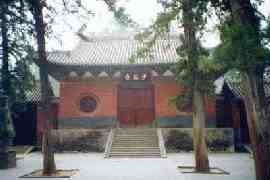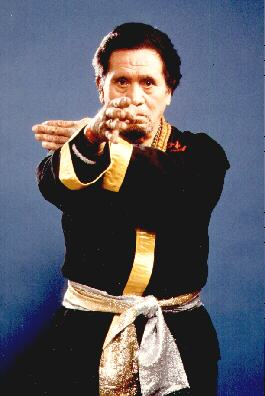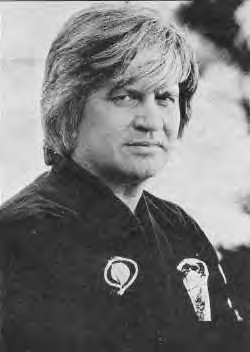A Brief History of Kenpo
The following is what Grand Master Spry believes to be the true History of Kenpo.
Kenpo is a mixture of five cultures:
- Chinese
- Japanese
- Okinawan
- Hawaiian
- American


Once he reached the Shaolin temple he found the monks to be in poor condition physically and mentally do to the excessive amount of time spent in meditation and doing very little else. Tamo began to instruct the monks in the art of the 18 hands of Lo Han. These techniques, which are the foundation for almost all martial arts today where never intended to be used as a method of fighting but where an exercise routine in which the monks could attain enlightenment while at the same time preserve their health.
Several decades after the death of Tamo, The Shaolin Temple came under attack (one of many attacks that would occur until the early twentieth century, these attacks came from bandits as well as the Chinese Emperor's army). During one of these invasions, a monk attacked several of the outlaws with an array of hand and foot techniques, killing some and driving off the remaining attackers. The other monks where so impressed by the display that they requested the monk to instruct them in this martial style as a means of protection. In later documents this fighting art was recorded as Chuan Fa or Fist Method.
Over the next several centuries the history of Chuan Fa and its evolution to Kenpo is clouded and it is difficult to gain an accurate account. What is known is that the art of Chuan Fa remained and is still practiced in China, but its teachings also found its way to the Islands of Okinawa as well as Japan. In both places, the art was referred to as Kenpo or "Law of the fist".
Unfortunately, the evolution of Kenpo in Japan is just as clouded and mysterious. However, at the beginning of the seventeenth century, Kenpo was brought from China to Kyushu, Japan. This art evolved through many years into its current form which is referred to as Kosho Ryu Kenpo, or Old Pine Tree school and it is from here that most modern forms of Kenpo are derived.



From here, Kenpo and its other forms take many twists and turns, constantly evolving into new states of being and the history of Kenpo continues to be written to this day by its new Grand Masters like Steve Spry.
What is American Kenpo?
American Kenpo Karate - meaning "Law of the Fist" - trains and teaches you to think. Through the knowledge learned, you will be able to apply your self-defence skills, hands, feet, elbows, knees, etc. to defend yourself at a moment’s notice.
The essence of American Kenpo Karate is an empty hand style of self-defence. It is a modern system of self-defence for survival. American Kenpo Karate is most noted for its emphasis on street self-defence. You learn street self-defense, both defensive and offensive, for street survival.
Grand Master Spry's American Kenpo is a combination of several Hawaiian and Polynesian martial arts studied and learned from their Masters. Grand Master Spry has great respect and love (Aloha) for the Hawaiian people, their culture and their Martial arts.
The Hawaiian martial arts lay the foundation of Grand Master Spry's American Kenpo Karate System which is a combination of:
- Kenpo
- Lua
- Lima-Lama
- Jujitsu
- Aikido
These Hawaiian, Polynesian martial arts have been passed from father to son for generations in the spirit of Aloha, love and respect, and protect with Mana (power).
This is American Kenpo Today